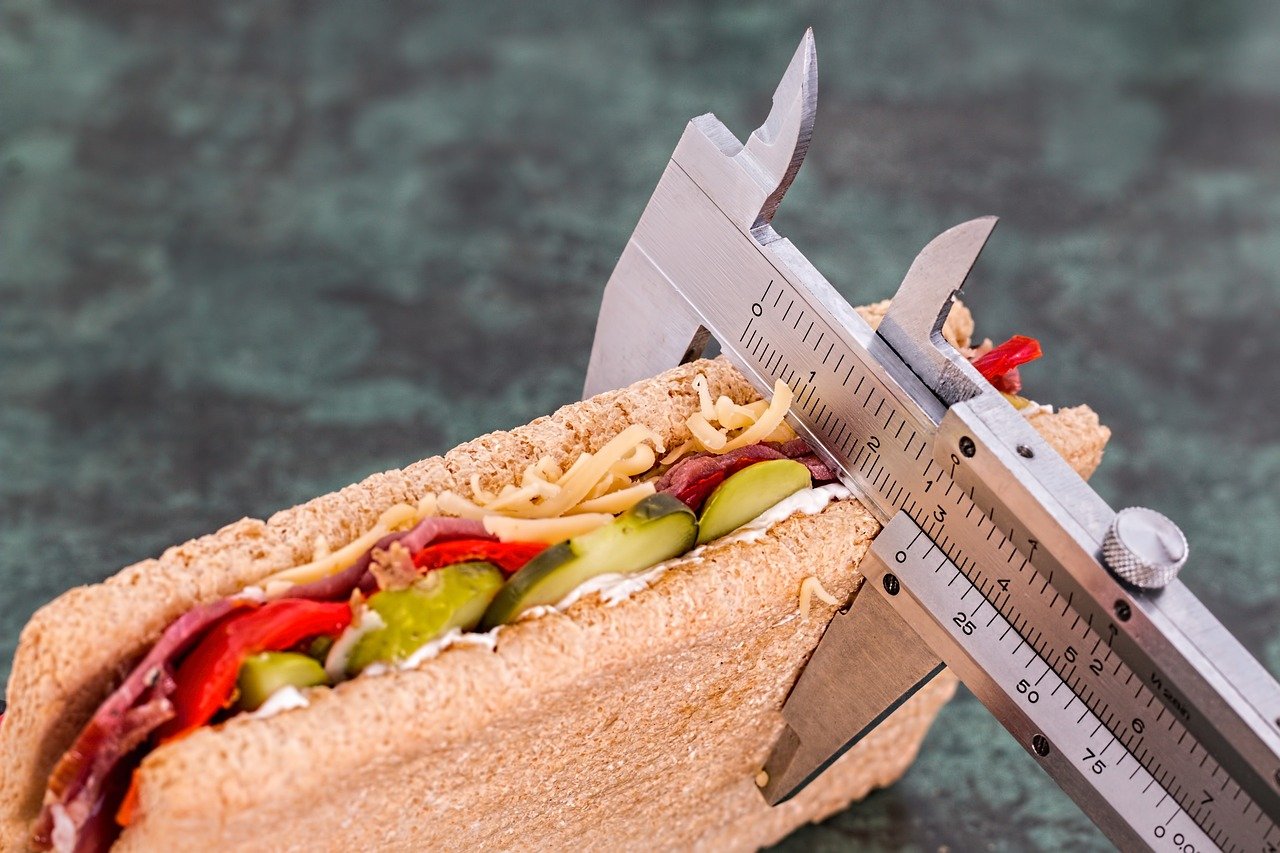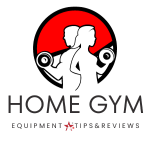In the world of fitness, the concept of a full-body workout routine is one that is widely sought after. With the increasing popularity of home gym machines, individuals now have the convenience and flexibility of working out in the comfort of their own homes. In this article, we explore the various options available in modern home gym machines, compare their costs, and provide a comprehensive summary of each machine’s capabilities. Furthermore, we delve into a range of exercises specifically designed to be performed on these machines, enabling individuals to effectively target and strengthen every major muscle group in their bodies. Whether you are a fitness enthusiast or a beginner looking to kickstart your fitness journey, this article serves as a valuable guide to achieving a full-body workout with home gym machines.

Choosing the Right Home Gym Machine
When it comes to setting up a home gym, choosing the right equipment is crucial to ensure an effective and enjoyable full-body workout routine. With the wide range of home gym machines available in the market, it can be overwhelming to determine which one is best suited for your needs. To make the decision-making process easier, there are several factors to consider.
Consider Your Fitness Goals
First and foremost, it is important to consider your fitness goals. Are you looking to improve cardiovascular endurance, build strength and muscle, or achieve weight loss? Different home gym machines cater to specific fitness goals, so identifying your objectives will help narrow down the options. For example, if your main goal is to improve cardiovascular fitness, a treadmill or exercise bike might be the ideal choice.
Determine Your Budget
Another important factor to consider is your budget. Home gym machines can vary greatly in price, so it’s essential to determine how much you are willing to invest. In general, more sophisticated and versatile machines tend to be pricier. However, it is important to strike a balance between your budget and the features that are most important to you. Prioritize the functionalities that align with your fitness goals while staying within your desired budget.
Assess the Space Available
Before purchasing a home gym machine, assess the space available in your home. Some machines can be quite large and require ample space for proper usage. Measure the dimensions of the area where you intend to place the equipment and ensure that there is sufficient clearance around it. This will prevent any potential accidents or discomfort during workouts.
Research Different Home Gym Machines
With a clearer understanding of your fitness goals, budget, and space constraints, it’s time to dive into the research phase. Take the time to explore the different home gym machines available in the market. Some popular options include treadmills, exercise bikes, elliptical trainers, rowing machines, Multi-functional strength training systems, Smith machines, leg press machines, cable machines, dumbbell sets, and power racks.
Read Reviews and Ratings
To gain further insight into the effectiveness and quality of various home gym machines, read reviews and ratings from other users. Online shopping platforms and fitness websites often provide customer feedback and ratings. Pay attention to both positive and negative reviews to get a comprehensive understanding of the pros and cons of each machine. This will help you make a more informed decision.
Visit Local Fitness Stores
If possible, visit local fitness stores to try out different home gym machines firsthand. This hands-on experience will give you a better feel for the machines and their functionalities. Take note of the comfort, stability, and ease of use of each machine. Consulting with the store staff can also provide valuable insights and recommendations based on your fitness goals and requirements.
Consult with a Fitness Professional
To ensure that you are making the best choice for your specific fitness needs, consider consulting with a fitness professional. They can provide expert guidance based on your goals and limitations. A fitness professional will be able to analyze your requirements and recommend home gym machines that align with your objectives. They can also provide guidance on safe and effective usage of the equipment.
Top Home Gym Machines
Now that we have considered the factors that should influence your decision, let’s explore some of the top home gym machines available and their benefits.
Treadmills
Treadmills are versatile machines that allow for both walking and running exercises. They provide an excellent cardiovascular workout and can be adjusted to different incline levels to simulate outdoor terrains. Treadmills are beneficial for improving stamina, burning calories, and strengthening leg muscles.
Exercise Bikes
Exercise bikes are perfect for those looking to improve cardiovascular fitness while minimizing impact on the joints. They are compact and easy to use, making them a popular choice for home gyms. Exercise bikes target the lower body muscles, including the quads, hamstrings, and calves, and can be adjusted to varying intensity levels.
Elliptical Trainers
Elliptical trainers offer a low-impact workout that engages both the upper and lower body. They mimic a natural elliptical motion and provide effective cardio training without stressing the joints. Elliptical trainers are beneficial for improving cardiovascular fitness, strengthening the leg muscles, and toning the arms.
Rowing Machines
Rowing machines provide a full-body workout, engaging the arms, legs, and core muscles. They offer a low-impact cardiovascular exercise while simultaneously building strength and endurance. Rowing machines are ideal for those seeking a comprehensive workout routine that works multiple muscle groups simultaneously.
Multi-Functional Strength Training Systems
Multi-functional strength training systems, also known as home gyms or all-in-one machines, are versatile equipment that combines various strength-training exercises into a single unit. These machines typically include features such as cable pulley systems, weight stacks, and adjustable benches. They allow for a wide range of exercises, targeting different muscle groups.
Smith Machines
Smith machines are popular for weightlifting exercises, particularly for squats and bench presses. They provide added stability and safety due to the guided barbell track. Smith machines are versatile and offer a wide range of exercises to target different muscle groups.
Leg Press Machines
Leg press machines isolate the leg muscles, particularly the quadriceps, hamstrings, and glutes. They provide a controlled and safe environment to perform leg exercises without the use of free weights. Leg press machines come in various designs, including horizontal and vertical orientations.
Cable Machines
Cable machines consist of adjustable weight stacks and a cable pulley system, allowing for a vast range of exercises and movements. They target different muscle groups depending on the attachments and accessories used. Cable machines are known for providing constant resistance throughout the exercise range of motion.
Dumbbell Sets
Dumbbell sets offer a versatile and cost-effective option for strength training at home. They come in various weights and can target specific muscle groups effectively. Dumbbell exercises can be done in various positions, allowing for a wide range of exercises to be performed.
Power Racks
Power racks, also known as squat racks, are essential for those focusing on strength training and weightlifting exercises. They provide safety features such as adjustable safety bars and J-hooks, allowing for heavy lifting with reduced risks. Power racks can accommodate exercises such as squats, bench presses, pull-ups, and various barbell exercises.

Full-Body Workout Routine
Now that you have chosen the right home gym machine based on your fitness goals, budget, and space availability, let’s explore a sample full-body workout routine that incorporates various exercises targeting different muscle groups.
Warm-up Exercises
Before diving into the main workout routine, it is essential to warm up the body properly. Spend 5-10 minutes performing dynamic stretching exercises such as arm circles, leg swings, and torso twists. This will increase blood flow, prepare the muscles for exercise, and reduce the risk of injury.
Chest Exercises
For chest exercises, utilize the bench press and chest fly machines. These exercises primarily target the pectoral muscles. Perform 3 sets of 10-12 repetitions for each exercise, ensuring proper form and controlled movements.
Back Exercises
To target the back muscles, incorporate exercises such as lat pulldowns and bent-over rows. These exercises strengthen the upper and lower back muscles. Aim for 3 sets of 10-12 repetitions while maintaining proper posture and engaging the back muscles throughout the movements.
Shoulder Exercises
For shoulder exercises, utilize the military press and lateral raise machines. These exercises target the deltoid muscles. Perform 3 sets of 10-12 repetitions for each exercise, focusing on controlled and fluid movements.
Leg Exercises
To target the leg muscles, incorporate exercises such as squats and lunges. These compound exercises engage the quadriceps, hamstrings, and glutes. Aim for 3 sets of 10-12 repetitions while maintaining proper form and full range of motion.
Arm Exercises
For arm exercises, use the dumbbell sets or cable machines to perform bicep curls and tricep pushdowns. These exercises target the biceps and triceps. Perform 3 sets of 10-12 repetitions for each exercise, focusing on complete muscle contraction and control.
Core Exercises
To strengthen the core muscles, incorporate exercises such as planks and Russian twists. These exercises engage the abdominal muscles and obliques. Aim for 3 sets of 10-12 repetitions for each exercise, focusing on proper form and engaging the core muscles throughout the movements.
Cardiovascular Exercises
For cardiovascular exercises, utilize the treadmill running or stationary bike machine. Perform 20-30 minutes of moderate to high-intensity exercise, depending on your fitness level and goals. This will help improve cardiovascular endurance and burn calories.
Cool-down Stretches
After completing the main workout routine, spend 5-10 minutes performing static stretching exercises to cool down the body. Focus on stretching the muscles that were targeted during the workout. This will help reduce muscle soreness and improve flexibility.
Rest and Recovery
Ensure that you allow 1-2 days of rest and recovery between workouts. This will give your muscles ample time to repair and grow stronger. Overtraining can lead to decreased performance and increased risk of injury, so it is important to prioritize rest and recovery.
Maximizing the Benefits of Home Gym Machines
To maximize the benefits of using home gym machines, there are certain strategies and considerations to keep in mind.
Adjusting Seat Positions and Machine Settings
Ensure that you adjust the seat positions and machine settings according to your body size and comfort. Proper alignment is essential to prevent injuries and optimize the effectiveness of each exercise. Consult the machine’s user manual or seek guidance from a fitness professional if you are unsure about the correct settings.
Understanding Proper Form and Technique
Proper form and technique are crucial for efficiency and safety during workouts. Take the time to learn and understand the correct form and technique for each exercise. Engage the targeted muscles, maintain proper posture, and avoid using momentum or relying on other muscle groups to compensate.
Gradually Increasing Intensity and Resistance
To progress in your fitness journey, gradually increase the intensity and resistance of your workouts. This can be achieved by adding more weight, increasing the duration or intensity of cardiovascular exercises, or incorporating more challenging variations of exercises. Gradual progression will help prevent plateauing and continuously challenge your muscles.
Including Variety in Your Workout Routine
To prevent boredom and maintain motivation, include variety in your workout routine. Incorporate different exercises, machines, and training methods to challenge your muscles in different ways. This will promote overall muscle development and prevent overuse injuries that may occur from repetitive movements.
Tracking Progress and Setting Goals
Keep track of your workouts, including the number of sets, repetitions, and weights used. This will allow you to monitor your progress and make necessary adjustments to your routine. Set specific, measurable, achievable, relevant, and time-bound (SMART) goals to stay focused and motivated.
Ensuring Proper Rest and Recovery
Proper rest and recovery are essential for muscle growth and overall health. Allow your body sufficient time to recover between workouts. This includes getting enough sleep, fueling your body with nutritious food, and practicing stress management techniques. Adequate rest and recovery will optimize your performance and minimize the risk of injuries.
Maintaining a Balanced Diet and Hydration
In conjunction with regular exercise, maintaining a balanced diet and staying hydrated are crucial for maximizing the benefits of home gym workouts. Fuel your body with nutrient-dense foods that support your fitness goals. Stay hydrated by drinking an adequate amount of water before, during, and after your workouts to maintain optimal performance and prevent dehydration.

Sample Full-Body Workout Routine
To help you create a structured full-body workout routine using home gym machines, here is a sample routine incorporating the exercises mentioned earlier:
Warm-up:
Spend 5-10 minutes performing dynamic stretching exercises.
Chest:
- Bench Press: 3 sets of 10-12 repetitions.
- Chest Fly: 3 sets of 10-12 repetitions.
Back:
- Lat Pulldown: 3 sets of 10-12 repetitions.
- Bent-Over Rows: 3 sets of 10-12 repetitions.
Shoulders:
- Military Press: 3 sets of 10-12 repetitions.
- Lateral Raises: 3 sets of 10-12 repetitions.
Legs:
- Squats: 3 sets of 10-12 repetitions.
- Lunges: 3 sets of 10-12 repetitions.
Arms:
- Bicep Curls: 3 sets of 10-12 repetitions.
- Tricep Pushdowns: 3 sets of 10-12 repetitions.
Core:
- Plank: 3 sets of 30-60 seconds.
- Russian Twists: 3 sets of 10-12 repetitions.
Cardiovascular:
- Treadmill Running: 20-30 minutes of moderate to high-intensity exercise.
- Stationary Bike: 20-30 minutes of moderate to high-intensity exercise.
Cool-down:
Spend 5-10 minutes performing static stretching exercises.
Rest and Recovery:
Allow 1-2 days of rest and recovery between workouts.
Maintenance and Safety Tips
To ensure a safe and long-lasting home gym experience, here are some maintenance and safety tips to keep in mind:
Regularly Clean and Lubricate Machines
Clean and lubricate your home gym machines regularly to prevent dust buildup and ensure smooth operation. Follow the manufacturer’s guidelines for cleaning and maintenance.
Check for Loose or Worn Parts
Periodically inspect your home gym machines for any loose or worn parts. Tighten bolts and screws as needed, and replace any damaged or worn-out components to maintain safety and functionality.
Use Machines with Proper Footwear and Attire
Always wear appropriate footwear and attire while using home gym machines. This includes wearing supportive athletic shoes and clothing that allows for a full range of motion.
Always Start with Lighter Weights and Gradually Increase
When starting a new exercise or using a new machine, always begin with lighter weights or resistance settings. Gradually increase the intensity or weight as your muscles adapt and become stronger.
Listen to Your Body and Avoid Overexertion
Pay attention to your body’s signals and avoid overexertion. Pushing yourself too hard can lead to injuries. If you experience pain, dizziness, or shortness of breath, stop exercising and consult with a healthcare professional.
Warm-up and Stretch Before Each Workout
Never skip your warm-up and stretching routine before each workout. This will prepare your muscles for the exercises and reduce the risk of injury.
Consult with a Doctor if You Have Any Health Concerns
If you have any underlying health conditions or concerns, consult with a doctor before starting a new exercise program. They can provide guidance based on your specific medical history and ensure safe participation.
Follow Safety Instructions and Guidelines
Always follow the safety instructions and guidelines provided by the manufacturers of your home gym machines. This will help you understand how to properly use the equipment and reduce the risk of accidents.
Stay Hydrated Throughout Your Workout
Drink an adequate amount of water throughout your workout to stay hydrated. Dehydration can lead to decreased performance and potential health risks. Keep a water bottle nearby and take regular sips during the workout.

Conclusion
Choosing the right home gym machine is essential for a comprehensive full-body workout routine. By considering your fitness goals, budget, and space availability, you can make an informed decision that aligns with your individual preferences and needs. Regular exercise using home gym machines can lead to improved strength, endurance, and overall fitness. However, it is important to prioritize safety, proper form, and technique while exercising. Additionally, maintaining a balanced diet, ensuring proper rest and recovery, and tracking your progress will help maximize the benefits of home gym workouts. With the right equipment and a well-structured workout routine, you can achieve your fitness goals in the comfort of your own home.


One thought on “Full-Body Workout Routine with Home Gym Machines”